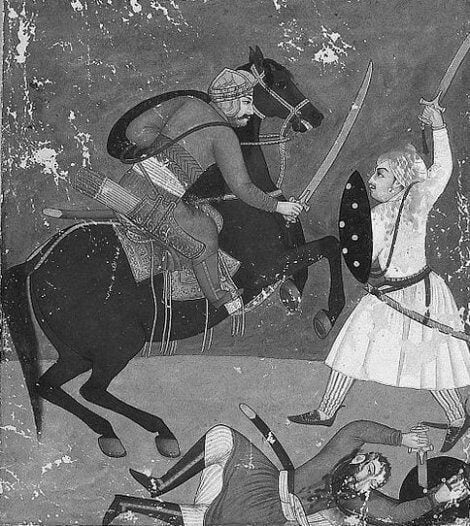Rajasthan’s history is filled with tales of valor, sacrifice, and undying love. Among these, the story of Rani Padmavati (also known as Queen Padmini) and the Siege of Chittorgarh by Alauddin Khilji is one of the most captivating. This legendary tale of honor and sacrifice has been passed down for generations, making Chittorgarh a symbol of Rajput bravery. But was it just a myth, or is there truth behind this historical romance? Let’s uncover the untold story.
Who Was Rani Padmavati?

Rani Padmavati, the Queen of Chittorgarh, was renowned for her extraordinary beauty and intelligence. She was the wife of Maharawal Ratan Singh, the Rajput ruler of Chittor. According to historical texts and folklore.
Alauddin Khilji’s Obsession and the Siege of Chittorgarh

Alauddin Khilji, the ruthless Sultan of Delhi, was known for his conquests and strategic warfare. Upon hearing about Rani Padmavati's unparalleled beauty, he became obsessed with seeing her and capturing the kingdom of Chittor.
1️⃣ Khilji’s Trick – Khilji sent a peace proposal to Ratan Singh, asking to see Rani Padmavati just once. However, Rajput traditions forbade queens from appearing before outsiders. A clever plan was devised where Khilji was allowed to see her reflection in a mirror.
2️⃣ The Betrayal – Enraged and desperate, Khilji tricked Maharawal Ratan Singh, capturing him and demanding Padmavati in exchange for his release.
3️⃣ The Fierce Battle – The Rajputs, led by Gora and Badal, devised a clever rescue plan. Disguised as a gift convoy, they attacked Khilji’s camp, rescuing their king. Furious, Khilji launched a full-fledged siege on Chittorgarh in 1303 AD.
The Ultimate Sacrifice – Jauhar by Rani Padmavati
As the battle turned against the Rajputs, Rani Padmavati and thousands of Rajput women performed Jauhar—a ritual of self-immolation to protect their honor rather than fall into the hands of the enemy. The act of Jauhar at Chittorgarh became a symbol of Rajput pride and sacrifice.
Khilji captured an empty fort, but he could never claim Rani Padmavati, making this one of the greatest stories of sacrifice in Indian history.
Is the Story of Rani Padmavati True?
Historians debate the authenticity of this tale. Some claim it is based on Malik Muhammad Jayasi's 16th-century poem "Padmavat", written over 200 years after the event. Others argue that Khilji’s attack on Chittor was purely for expansion, not due to Padmavati.
Regardless of its historical accuracy, the legend of Rani Padmavati continues to inspire millions, making Chittorgarh a revered site in Rajasthan’s history.
Why Chittorgarh Still Stands as a Symbol of Rajput Valor
Even today, Chittorgarh Fort attracts thousands of visitors who come to witness the remnants of this legendary tale. The Padmini Palace, where Khilji saw Padmavati’s reflection, remains an important historical site.
- Timings: 9:30 AM - 5:30 PM
- Best Time to Visit: October - March
- Entry Fee: ₹20 (Indians), ₹200 (Foreigners)
Conclusion
The tale of Rani Padmavati and the Siege of Chittorgarh is not just a story of war and sacrifice but a reflection of Rajput bravery, honor, and undying love. Whether myth or history, it continues to inspire generations and remains one of the most talked-about legends of India.
Have you ever visited Chittorgarh Fort? Share your experience in the comments below! 👇



